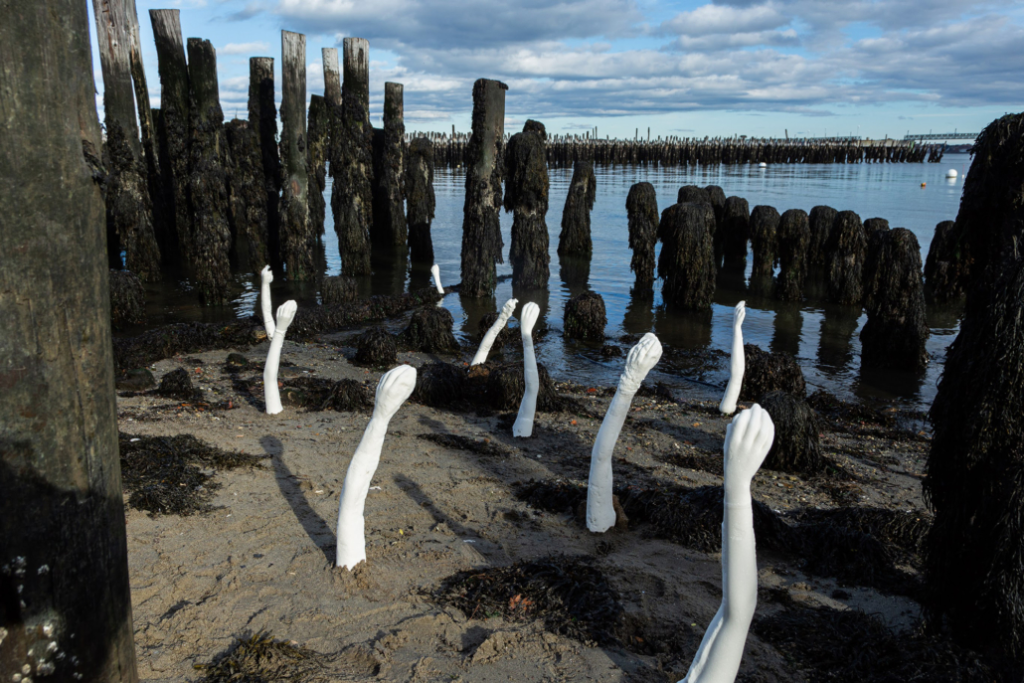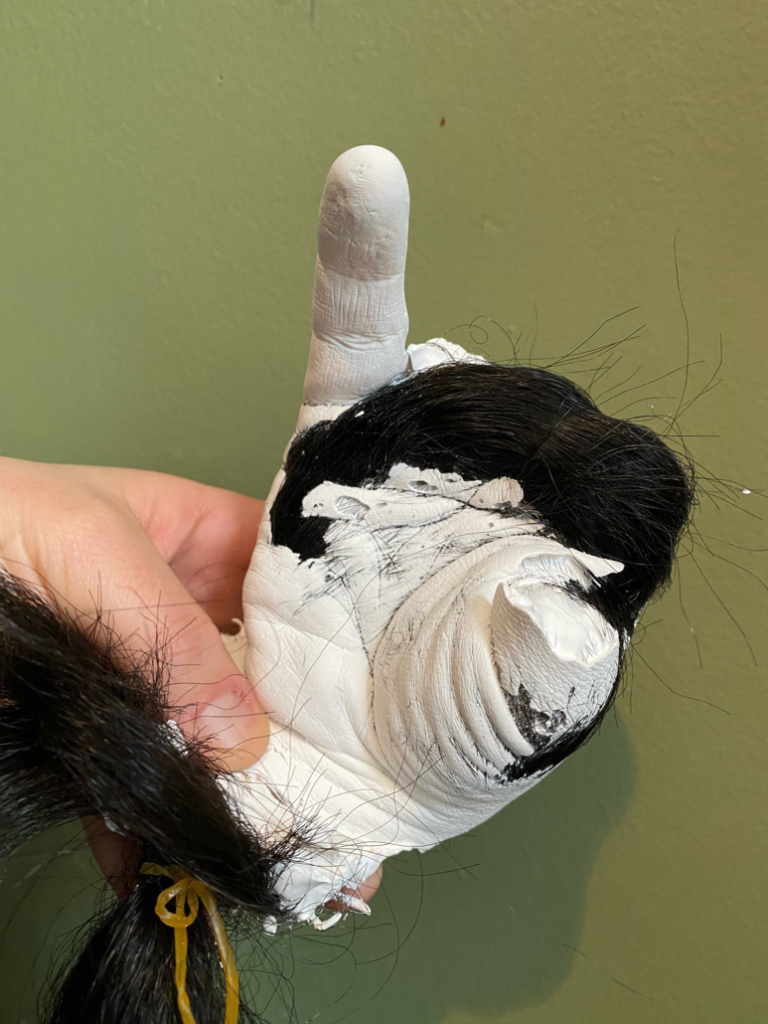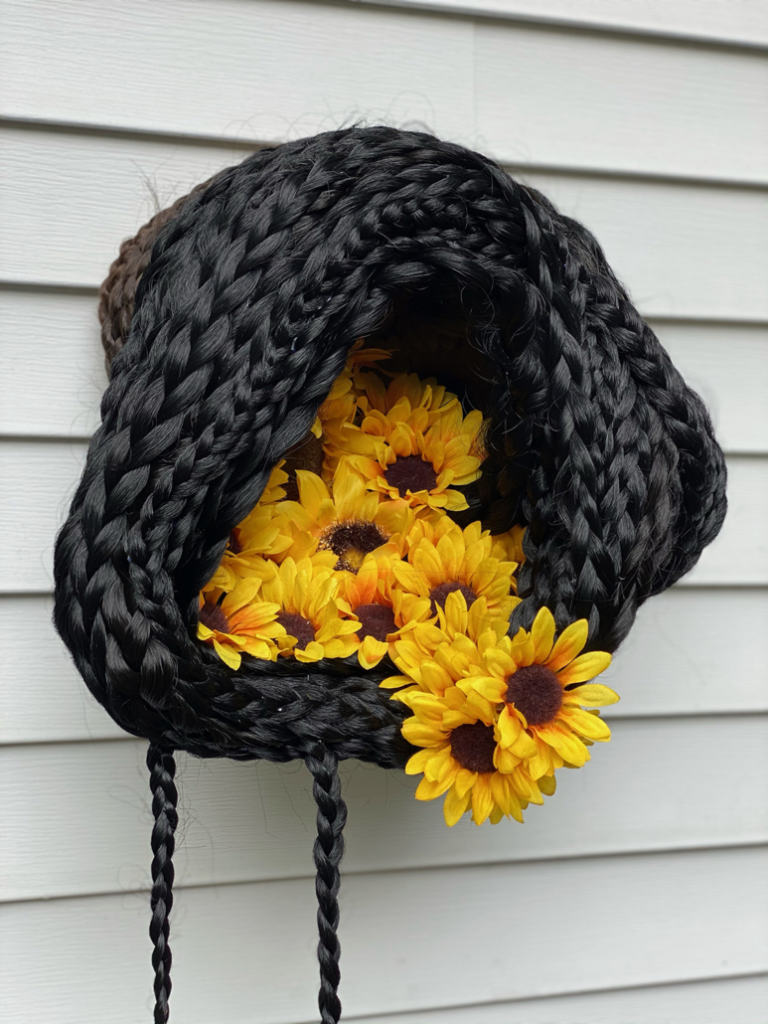During the COVID-19 pandemic, we interviewed a handful of former Gallery 263 exhibiting artists to see if and how their practice was evolving due to the pandemic.
Tell us about yourself and your practice.
images of work





I’m Veronica, I am an artist living in Westbrook, ME and I work out of a garage in the back of my apartment complex. My practice is focused on using ‘unconventional’ materials and hybridizing them together – such as using hair and concrete together. I really like to do experiments and material tests and connect the material with the emotions I am attempting to exude from the sculptures. From there is where my pieces are formed. Here is an excerpt from my current 2021 artists’ statement:
Utilizing hair, kitschy, and other unconventional materials in my works – I create intense personal moments by means of material hybridization and ideals of beauty. Material fragility echoes sentiments of a lost self, and at the same time comments on contemporary Latinx and feminist issues. Recently, I have been working at the intersection of identity, vulnerability, protection, and power through the facade of dark absurdity using materials such as sugar, fake hair, chain link fence, and fake sunflowers.
How has your creative practice shifted and adapted during the pandemic?
Last year, when the pandemic first hit – I actually wasn’t making all that much. I had just had a child the year before in 2018 and I was more focused on my curatorial work as a Program Manager and DSP at a studio for adults with Disabilities. When this program closed, and we were off work for about three months, I just fell back into making with all of this time I was given. I felt so privileged to be able to make work at a time when this horrible sickness was ravaging the world; but it also in turn helped me make sense of the world at that time.
After the murder of George Floyd, long story short, I penned an anti-racism letter toward my place of employment that was taken as aggressive and unwarranted – and I was forced to resign from my position. This really caused a shift in why I make and made me realize that the ways in which I make and the emotions I am attempting to allude to are valid and warranted. Folx need to be made uncomfortable through the works because that’s where conversations and changes can happen. The things in the letter and things I allude to in my work aren’t aggressive; they are hard ass truths that folx need to hear to begin to change the community and society at large to show the disproportionate ways in which BIPOC folx are treated.
How has the content of or approach to your work shifted because of current events?
My work has always focused on identity politics and activism – however when I was making in the past, the work and my practice wasn’t really accepted and brushed off as ‘art therapy’ or something some called ‘trauma art’ i.e. things I would have to work through to get to the REAL artmaking – whatever that means.
When I began making in 2020, and realizing that I wasn’t only using my work to work through the current events but also giving emotion and feeling to the current events – this became a turning point in my work. The reason was that I could use a work of art to get folx to see things from a different perspective. Not only does it help me disseminate information, but it gives it an emotional perspective.
I’ll use an example of one of my current works. This in progress piece (image #3) untitled (i shine) was in reaction to something that had happened in the summer of 2020. A Latina woman was picking sunflowers out of her plot in a community garden in Portland, Maine and a white woman came up to her and began telling her she was going to call the cops and that she wouldn’t be picking the sunflowers. The Latina woman let the white woman know that this was her plot and she’s allowed to be here – but the white woman didn’t believe her. It wasn’t until the Latina woman’s daughters came and vouched for her that she was believed.
This was AFTER the murder of George Floyd. This story really really showed me that whites are still threatened by the existence of Black and Brown bodies. And I want to use the work that I make to help folx understand this fact. Additionally, with the work I am producing now, still making the way that I have always made, the work became more embedded with emotional traumas that Black and Brown folx face on a daily basis. I think the work is more accepted now because of changes in perceptions and realizing that there are a multitude of ways to make and that these inconsistencies and racist actions STILL exist in the world.
Do you have plans to transform your work or approach in 2021?
I do! Recently, I have been writing a lot of poetry to accompany my works and am feeling that this is a better way to give a certain kind of emotional quality to the works. I have always loathed writing artists’ statements and she always felt so stuck when doing so. The poetry directs the works and gives it more context. This is a piece of poetry from a piece I created last year titled historical silencing that consisted of 15 arms cast out of sugar and placed on the shoreline of the Atlantic ocean to talk about the silencing that Latinx folx faced during the colonization of Portland, Maine:
This isn’t meant to be pretty or assuage your guilt.
It’s
Crumbling
Breaking
Pulling
Pushing
Arms reaching out for help and nothing is there.
Left in its place – hair- a stark reminder of the event.
Evidence of a body.
Evidence.
A photo of a child on a beach in Turkey.
A photo of Mothers and children running away from smoke bombs and gunfire at the Mexican border.
A photo of a pregnant woman in Brazil on the front lines of protests.
Lying
Running
Standing
Fighting.
Immovable, like the ocean.
The sugar is gone but the hair remains.
The body remains.
The fight remains.